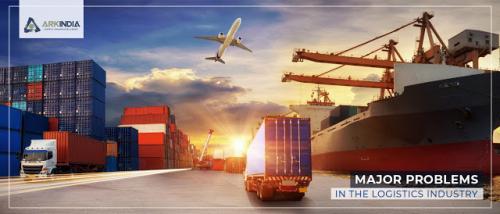
The logistics industry is what drives the economy of every country in the world. It is also why the world is a smaller place today, and global trade has been made possible. The transportation and Logistics industry aids most major industries and, in essence, is the backbone of operations and development. These industries include everything from Agriculture, medicine, and manufacturing to essential services and e-commerce.
The evolution that global trade has been witnessing because of ever-growing technological advancements, most businesses have had to play catch up to stay profitable and competitive. The Logistics industry is no different in that regard. There has been much advancement in many aspects of the Logistics and Transportation department, as the introduction of cloud computing, fleet management, better tools for Inventory Management etc.
These advancements may be suitable for these businesses in the longer run, but it is not just the evolving technology. The marketplace is more demanding of quality, quantity, and consistency than ever. All this evolution is also moving rapidly before businesses have a chance to catch their breath. So what are some significant problems that the Logistics industry has to go through?
1. Balancing out the Transportation Cost Sheets
Transportation is something that costs more than anything. It involves the management of a flock of large vehicles, personnel to operate and manage everything, and most importantly, fuel costs. With fuel costs rising more and more with time, managing this expenditure wisely has become one of the most critical responsibilities of a Supply Chain Management professional. There are a few ways companies can tackle this challenge.
Reducing the number of total carriers can solve this problem. This means working with fewer partners and redistribute workload for lower rates. This, however, can also lead to over-dependence on these few carriers.
Compiling shipments and consolidating bulk orders could help a business by getting them bulk rates. But again, this could go south and cause a delay in shipments if not managed well.
Working with Fleet Management and getting familiar with it is one way to plan and execute expenses with way more ease. Such software can predict upcoming problems like traffic, wear and tear of the vehicles, etc.
2. Reworking Business Processes
What this statement means is businesses need to implement the various options available to them. One of these options is hiring 3PL (3rd Party Logistics) services. Such partner services help a business manage hectic processes and reduce costs. The only drawback of something like this is the control over the fine details that you miss. But if a company allows it, 3PL services should definitely be considered.
3PL companies have experienced logistics partners with the knowledge and expertise to pull off complicated tasks and processes with ease. This saves a business a lot of money, setting up their own industry-standard shipping and logistics operation.
3. Better Customer Service
One of the biggest challenges that businesses face in this era is maintaining healthy customer relations and services. Since their expectations for deliveries, after-sales services, quality of the product, etc., have increased manifold, customers have evolved now. This is because they have more options than ever, and everybody focusing on servicing them to the best of their ability. Improving customer service is an essential aspect of imposing your brand image on the market.
Simple steps like making sure of quick delivery times, listening to the customer and being readily available to answer their queries are enough to usually keep people happy. Shipping notifications, ETAs on their deliveries, offers and coupons for repeat customers are ways to maintain customer loyalty.
4. Economical Impact
One major challenge that every business faces are the instability and inconsistency of the country's Economy. These are uncontrollable factors that can shake up any business operation, especially logistics. Such dynamic economic changes also influence government policies and regulations, which can mean businesses having to make significant changes which can sometimes cost a lot of money.
These were some examples of challenges and hurdles that a Logistics and Transportation business can expect in this modern era. No problems mentioned here are un-fixable. All they need is some strategic planning and execution to get over these obstacles..